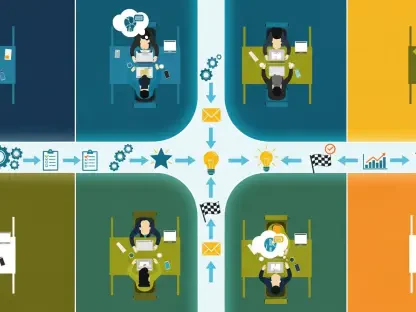Recent updates to Google’s Gmail platform have stirred concerns in the email marketing realm by potentially undermining personalization—a cornerstone of effective email communication strategies. These changes, touted as enhancements, challenge the delicate balance marketers have crafted over the years between automation and a personal touch. With the digital marketing landscape heavily reliant on personalization to engage consumers, the modifications raise questions about the future of these tailored approaches. As consumers increasingly expect bespoke communication that resonates with their preferences and interests, these Gmail alterations are sparking debate about their long-term impact on marketing efficacy. The tension arises primarily from the integration of automated processes, which, while efficient, often fail to mimic the nuanced interaction consumers have come to appreciate in their inboxes. Gmail’s alterations represent a significant shift in how promotional content is crafted, presented, and consumed, bringing into focus the critical dynamic between technology and personalized marketing. With the growing significance of personalized marketing in establishing and maintaining customer relations, the implications of Gmail’s new features warrant careful consideration.
Impact of Deal Annotations
Deal Annotations were initially introduced by Google as a means to enrich the visual appeal of promotional emails by integrating schema code. This feature allows marketers to replace traditional preview text with more attractive elements such as discount amounts, expiration dates, and images. Despite these promising functionalities, the adoption rate of Deal Annotations has been notably low. The primary reason is the additional technical effort required to implement the schema code alongside the uncertainty about its effectiveness in improving campaign performance. Moreover, the similarity of Deal Annotations to standard Gmail inbox advertisements raises concerns among brands, many of which seek engagement without the stigma associated with overtly advertisement-like emails.
The transition to Automatic Extraction marks a significant pivot in Gmail’s approach to Deal Annotations, as artificial intelligence now plays a vital role in extracting critical information from commercial emails to generate the annotations. Although strides have been made in improving the accuracy of this process, continued errors undermine marketers’ control over how their message previews appear. This shift compels marketers to craft subject lines that must stand independently, free from the supportive context traditionally offered by preview text. The reduction in control and potential for redundancy in messaging may weaken the overall impact of marketing emails, as marketers struggle to maintain the engaging, personalized communication that resonates with their audiences.
Limitations of Deal Cards
Deal Cards, a newer addition to Gmail’s marketing features, share some similarities with Deal Annotations but are distinct in their presentation and scope. This feature aims to bring discounts to the forefront of email content by prominently displaying discount information above the email body, yet devoid of accompanying images or carousels. The primary concern with Deal Cards is that they may overshadow the secondary, personalized messages within emails by concentrating solely on discount offers. This focus could inadvertently diminish the essence of personalized marketing, which seeks to foster deeper connections with consumers through a nuanced understanding of their preferences and interests.
Despite the promise of attracting consumer attention through prominently displayed discounts, the automatic extraction used to generate Deal Cards limits marketers’ ability to manage their communication tactfully. The inability to opt out of AI-generated content leaves brands with little choice but to adapt their strategies, often by increasing email frequency to maintain message impact. This strategic pivot away from personalization toward volume could erode consumer engagement, as a bombardment of discount-focused communications risks appearing transactional rather than relational. Brands are thus faced with the challenge of reassessing their email marketing approaches to ensure the preservation of personalized consumer interactions—a cornerstone of successful marketing strategies.
Marketing Content Usage Challenges
Google’s Marketing Content Usage program presents another challenge, blurring the traditional boundaries between email content and advertisement. This initiative involves extracting elements from promotional emails and repurposing them across Google’s platforms, including Search, Shopping, and Maps. While brands can technically opt out via their Merchant Center, the program fundamentally alters the perception of email marketing by shifting it from a direct communication channel to a broader, less personalized messaging strategy. This usage of email content in a more public context contradicts the foundational principle of opt-in exclusivity, where subscribers anticipate tailored, private interactions with chosen brands.
This shift towards generalized content usage potentially risks diluting consumer trust and loyalty, assets carefully cultivated through personalized email interactions. By repurposing email content for mass distribution, Google challenges brands to reconsider their engagement strategies, which have traditionally emphasized relationship building through exclusive, direct communication. The assumption that email content is universally applicable dismisses the intricate consumer-brand relationships nurtured through opt-in emails. Consequently, marketers grapple with maintaining these critical connections amidst a landscape increasingly driven by broader, less nuanced communication tactics.
Erosion of Personalization in Email Marketing
Recent updates to Google’s Gmail have caused a stir in the email marketing world, raising concerns about the erosion of personalization—a vital part of successful email strategies. These changes, marketed as improvements, challenge the balance marketers have cultivated between automation and a personal touch. In a digital space reliant on personalized engagement, they raise questions about future marketing methods. As consumers increasingly desire communication that reflects their preferences, these Gmail updates spark debate over their impact on marketing effectiveness. The main tension arises from automation, which, while efficient, struggles to replicate the nuanced interactions consumers value in email. Gmail’s changes signify a major shift in how promotional content is crafted and consumed, highlighting the critical interplay between technology and personalized marketing. Given the growing importance of personalized marketing in creating and sustaining customer relationships, understanding the ramifications of Gmail’s features is crucial for marketers moving forward.









